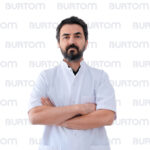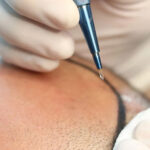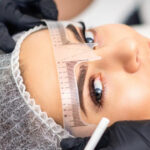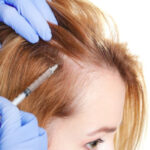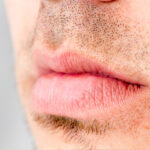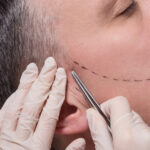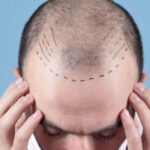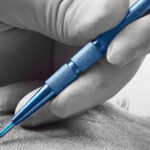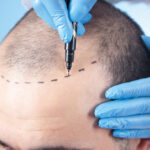Burtom ‣ Departments ‣ Hair Transplant
Language: 🇬🇧 English | 🇹🇷 Türkçe

Hair Transplant Center

Burtom Health Group
Founded in 1994, Burtom Healthcare Group has established itself among the key healthcare institutions in Bursa with thirty years of experience in the sector and the quality of services provided.
We demonstrate our patient-oriented approach and impeccable quality at every stage. In the first stage, we diagnose our patients free of charge. As a result, the diagnosis is made and the patient is informed. Local anesthesia is applied without causing any pain. Thanks to the vast experience of our professional team, the best hair transplantation techniques and advanced technology, we perform successful hair, beard and eyebrow transplantation and offer other hair loss treatments in Bursa. We prioritize sterilization and hygiene in our operations.
Best Hair Transplant in Turkey : With the understanding of being a reliable team with our experienced staff; We provide services in accordance with country and world standards without compromising our principles, together with patient satisfaction and quality.
Our vision is to continue growing every day with our modern infrastructure and quality healthcare approach. We expand our services in various public hospitals in many provinces.
Airport Pickup: We welcome you with our professional team at the airport, arranged according to your flight schedule, for your hair transplant procedure.
Transfer Servic: We will transport you to your exclusive 4-5 star luxury hotel in our private VIP vehicles, ensuring a comfortable and relaxing journey.
Translation Services: Our expert interpreters will accompany you during your stay and before and after the Hair Transplant service to facilitate your journey.
Transplantation Treatments

Hair Transplantation
Hair transplantation is a surgical procedure aimed at restoring hair growth in areas of the scalp with thinning or no hair. The procedure involves the removal of hair follicles from a donor site, typically the back or sides of the head, and transplanting them to areas where hair loss has occurred. There are two primary techniques for hair transplantation:
Follicular Unit Transplantation (FUT): In FUT, a strip of scalp containing hair follicles is surgically removed from the donor area. The follicular units (groups of hair follicles) are then dissected and transplanted into the recipient sites on the scalp.
Follicular Unit Extraction (FUE): FUE involves the individual extraction of hair follicles from the donor area using tiny punches. The follicles are then directly implanted into the recipient sites. FUE is less invasive than FUT and leaves minimal linear scarring.
The hair transplantation process typically includes the following steps:
Consultation and Evaluation: Patients consult with a hair transplant surgeon who assesses their hair loss pattern, discusses expectations, and determines if they are suitable candidates for the procedure.
Donor Area Preparation: For FUT, a strip of scalp is surgically removed and sutured, leaving a linear scar. In FUE, individual hair follicles are extracted using a specialized punch tool.
Follicle Preparation: The extracted follicles are carefully prepared for transplantation, ensuring their viability and integrity.
Recipient Site Creation: Tiny incisions or recipient sites are created in the bald or thinning areas of the scalp where the hair follicles will be transplanted.
Transplantation: The prepared follicles are meticulously placed into the recipient sites, following the natural hair growth pattern to achieve a natural appearance.
Postoperative Care: Patients receive instructions on postoperative care, including how to clean the scalp, manage any discomfort, and avoid activities that may impact the transplanted area.
Recovery and Growth: Transplanted hair initially falls out, but new hair growth typically begins within a few months. Full results may take several months to a year to become noticeable.
Hair transplantation is commonly used to address male and female pattern baldness, but it can also be employed to restore hair in other areas, such as eyebrows, beard, or mustache. The success of the procedure depends on factors like the surgeon’s skill, the quality of donor hair, and individual characteristics.
It’s essential for individuals considering hair transplantation to have realistic expectations and to consult with a qualified and experienced surgeon who can provide tailored advice based on their specific condition.
Sapphire FUE Hair Transplantation
Sapphire FUE (Follicular Unit Extraction) Hair Transplantation is an advanced technique within the field of hair restoration that incorporates the use of sapphire blades for creating recipient sites. FUE itself involves the extraction of individual hair follicles from a donor area and their transplantation to areas experiencing hair loss. Here are key aspects of Sapphire FUE:
Instrumentation:
Sapphire Blades: Instead of using steel blades, Sapphire FUE utilizes blades made from sapphire crystals. These blades are known for their precision and sharpness, allowing for finer and more accurate incisions.
Advantages of Sapphire Blades:
- Precision: Sapphire blades offer high precision, enabling the creation of smaller and more closely packed recipient sites.
- Reduced Tissue Trauma: The sharpness of sapphire blades reduces trauma to the surrounding tissues, potentially promoting faster healing.
- Customization: Surgeons can customize the size and angle of incisions, tailoring the procedure to the specific characteristics of the patient’s hair.
Procedure Steps:
- Consultation: Patients undergo a consultation to assess their suitability for the procedure and discuss goals and expectations.
- Donor Area Harvesting: Hair follicles are individually extracted from the donor area using the FUE technique, typically from the back or sides of the scalp.
- Sapphire Blade Incisions: Recipient sites are created using sapphire blades, ensuring precision and customization.
- Transplantation: Extracted hair follicles are transplanted into the recipient sites, adhering to the natural hair growth pattern.
- Postoperative Care: Patients receive instructions for postoperative care, including wound care, medication, and activity restrictions.
Advantages of Sapphire FUE:
- Natural Results: The fine incisions made with sapphire blades contribute to a more natural-looking hairline and overall results.
- Quick Healing: Reduced tissue trauma may lead to faster healing and less postoperative discomfort.
- Customization: Surgeons have greater control over the size, depth, and angle of incisions, allowing for a tailored approach.
- Less Scarring: The use of sapphire blades can result in smaller, less noticeable scars compared to traditional steel blades.
Candidate Considerations:
- Sapphire FUE is suitable for individuals experiencing male or female pattern baldness.
- Candidates should have an adequate supply of donor hair for transplantation.
- Realistic expectations and a commitment to postoperative care are crucial.
It’s essential for individuals considering Sapphire FUE Hair Transplantation to consult with a qualified and experienced surgeon who can assess their candidacy and provide personalized recommendations based on their specific needs and goals. The technique is considered a refinement of traditional FUE methods, offering potential advantages in terms of precision and aesthetic outcomes.
DHI Hair Transplantation
DHI, or Direct Hair Implantation, is an advanced technique in hair transplantation designed to provide natural-looking results with minimal invasiveness. Here are key aspects of DHI Hair Transplantation:
Specialized Implantation Pen:
DHI utilizes a specialized tool known as the Choi Implanter Pen. This pen-like device allows for the direct implantation of hair follicles into the recipient area without the need for prior incisions.
Procedure Steps:
- Consultation: Patients undergo a consultation to assess their candidacy and discuss their expectations and goals for the procedure.
- Donor Hair Extraction: Hair follicles are individually extracted from the donor area, typically located at the back or sides of the scalp.
- Graft Sorting and Preparation: Extracted hair follicles are carefully sorted and prepared for implantation without creating additional incisions.
- Direct Implantation with Choi Implanter Pen: The Choi Implanter Pen is used to create tiny channels in the recipient area and directly implant individual hair follicles, allowing for precise control over the depth and direction of each follicle.
- Postoperative Care: Patients receive postoperative care instructions, including guidance on wound care, medications, and activity restrictions.
Advantages of DHI:
- Precision and Natural Results: The Choi Implanter Pen allows for precise control over the placement of hair follicles, resulting in a natural-looking hairline and overall aesthetic.
- Minimized Trauma: The direct implantation technique minimizes trauma to the scalp, potentially leading to faster healing and reduced discomfort.
- No Need for Incisions: DHI eliminates the need for pre-made incisions since the hair follicles are directly implanted, reducing the overall procedure time.
- High Graft Survival Rate: The direct implantation method aims to enhance the survival rate of transplanted grafts.
Candidate Considerations:
- DHI is suitable for individuals with male or female pattern baldness or those seeking hairline restoration.
- Candidates should have a sufficient donor hair supply for transplantation.
- Realistic expectations and a commitment to postoperative care are crucial for successful outcomes.
Postoperative Care:
- Patients may experience mild swelling and redness in the days following the procedure.
- Adhering to postoperative care instructions, including prescribed medications and gentle cleaning of the transplanted area, is essential for optimal healing and results.
DHI Hair Transplantation is a preferred choice for those seeking a less invasive procedure with a focus on precision and natural-looking outcomes. Consultation with an experienced and qualified hair transplant surgeon is vital to determine candidacy and achieve successful and satisfying results.
Beard Transplantation
Beard transplantation is a cosmetic surgical procedure designed to enhance facial hair growth in individuals with sparse or patchy beards. This procedure is suitable for those who desire a fuller and more even distribution of facial hair, including the beard and mustache areas. Here are key aspects of beard transplantation:
Consultation: Patients undergo a consultation with a qualified surgeon to discuss their goals, assess the beard area, and determine the feasibility of the procedure.
Donor Area Selection: Hair follicles for beard transplantation are typically harvested from the back of the scalp, which serves as the donor area. This area is chosen for its similarity in texture and quality to facial hair.
Hair Follicle Extraction: The surgeon uses a hair transplantation technique, such as Follicular Unit Extraction (FUE), to individually extract hair follicles from the donor area.
Graft Preparation: Extracted hair follicles are carefully sorted and prepared for transplantation. The surgeon considers the natural growth angle and direction of facial hair during this process.
Recipient Site Creation: Tiny incisions or recipient sites are created in the beard and mustache areas where the new hair follicles will be implanted. These incisions are strategically made to mimic the natural growth pattern of facial hair.
Hair Follicle Implantation: The prepared hair follicles are meticulously implanted into the recipient sites, ensuring a natural and aesthetically pleasing distribution of facial hair.
Postoperative Care: Patients receive postoperative care instructions, including guidance on cleaning the transplanted area, prescribed medications, and restrictions on activities that may impact the healing process.
Healing and Growth: Initially, the transplanted hair falls out, but new growth typically begins within a few months. Full results may take several months to a year to become noticeable.
Maintenance and Styling: Patients can maintain and style their newly transplanted beard as they would natural facial hair. Regular grooming and trimming may be necessary to achieve the desired look.
Candidate Considerations: Beard transplantation is suitable for individuals with sparse or uneven facial hair growth.
- Candidates should have sufficient donor hair in the scalp area.
- Realistic expectations and a commitment to postoperative care are essential for successful outcomes.
Beard transplantation provides a permanent solution for individuals looking to enhance their facial appearance with a fuller and well-defined beard. Consulting with a qualified and experienced surgeon is crucial to discuss individual goals, assess candidacy, and plan a personalized approach to achieve optimal results.
Mustache Transplantation
Mustache transplantation is a specialized cosmetic procedure designed to enhance or restore the appearance of the mustache by transplanting hair follicles to areas with sparse or absent growth. This procedure is suitable for individuals who desire a fuller and well-defined mustache. Here are key aspects of mustache transplantation:
Consultation: Patients undergo a thorough consultation with a qualified surgeon to discuss their goals, assess the mustache area, and determine the feasibility of the procedure.
Donor Area Selection: Hair follicles for mustache transplantation are typically harvested from the back of the scalp, which serves as the donor area. This area is chosen for its similarity in texture and quality to facial hair.
Hair Follicle Extraction: The surgeon employs a hair transplantation technique, often Follicular Unit Extraction (FUE), to individually extract hair follicles from the donor area.
Graft Preparation: Extracted hair follicles are meticulously prepared for transplantation, taking into consideration the natural growth angle and direction of mustache hair.
Recipient Site Creation: Small incisions or recipient sites are created in the mustache area where the new hair follicles will be implanted. These incisions are strategically made to mimic the natural growth pattern of mustache hair.
Hair Follicle Implantation: The prepared hair follicles are carefully implanted into the recipient sites, ensuring a natural and aesthetically pleasing distribution of mustache hair.
Postoperative Care: Patients receive detailed postoperative care instructions, including guidance on cleaning the transplanted area, prescribed medications, and restrictions on activities that may affect the healing process.
Healing and Growth: Initially, the transplanted hair falls out, but new growth typically begins within a few months. Full results may take several months to a year to become noticeable.
Maintenance and Styling: Patients can maintain and style their newly transplanted mustache as they would natural facial hair. Regular grooming and trimming may be necessary to achieve the desired look.
Candidate Considerations: Mustache transplantation is suitable for individuals with sparse or uneven mustache growth.
- Candidates should have sufficient donor hair in the scalp area.
- Realistic expectations and a commitment to postoperative care are crucial for successful outcomes.
Mustache transplantation offers a permanent solution for individuals seeking to enhance or restore the appearance of their mustache. Consulting with an experienced and qualified surgeon is essential to discuss individual goals, assess candidacy, and plan a personalized approach to achieve optimal results.
Hair Transplantation in Women
Hair transplantation in women is a surgical procedure designed to address female pattern hair loss or other conditions leading to hair thinning. Women may experience hair loss for various reasons, including genetics, hormonal changes, medical conditions, or certain lifestyle factors. Here are key aspects of hair transplantation in women:
Consultation: Women considering hair transplantation undergo a comprehensive consultation with a qualified surgeon. The surgeon assesses the cause of hair loss, evaluates the extent of hair loss, and discusses the patient’s expectations and goals.
Diagnosis of Hair Loss Type: Hair loss in women can have various patterns, and the surgeon diagnoses the specific type to determine the most suitable treatment approach.
Candidate Evaluation: Candidates for hair transplantation should have sufficient donor hair in areas that are resistant to hair loss. The back and sides of the scalp are common donor areas.
Hair Follicle Extraction: The surgeon may use the Follicular Unit Extraction (FUE) technique to individually extract hair follicles from the donor area. This is a minimally invasive method that leaves tiny, nearly undetectable scars.
Recipient Site Creation: Small incisions or recipient sites are created in the areas of the scalp with thinning hair. These sites are strategically made to mimic the natural hair growth pattern.
Hair Follicle Implantation: The extracted hair follicles are meticulously implanted into the recipient sites. The surgeon ensures a natural distribution and angle of hair growth to achieve an aesthetically pleasing result.
Postoperative Care: Patients receive detailed postoperative care instructions, including guidance on cleaning the transplanted area, prescribed medications, and restrictions on activities that may affect the healing process.
Healing and Growth: Initially, the transplanted hair falls out, but new growth typically begins within a few months. Full results may take several months to a year to become noticeable.
Maintenance and Styling: Women can maintain and style their transplanted hair as they would natural hair. Regular grooming and styling may be necessary to achieve the desired look.
Candidate Considerations: Hair transplantation is suitable for women experiencing female pattern hair loss or other conditions leading to hair thinning. Candidates should have realistic expectations and a commitment to postoperative care.
Hair transplantation in women can be a successful and permanent solution for addressing hair loss. It is essential to consult with an experienced and qualified surgeon to determine candidacy, discuss expectations, and plan a personalized approach tailored to the individual’s needs.
Eyebrow Transplantation
Eyebrow transplantation is a cosmetic surgical procedure designed to enhance or restore the appearance of the eyebrows by transplanting hair follicles to areas with sparse or absent eyebrow growth. This procedure is suitable for individuals who desire fuller, well-defined eyebrows. Here are key aspects of eyebrow transplantation:
Consultation: Patients undergo a consultation with a qualified surgeon to discuss their goals, assess the eyebrow area, and determine the feasibility of the procedure.
Donor Area Selection: Hair follicles for eyebrow transplantation are typically harvested from the back of the scalp, chosen for its similar texture and quality to eyebrow hair.
Hair Follicle Extraction: The surgeon uses a hair transplantation technique, often Follicular Unit Extraction (FUE), to individually extract hair follicles from the donor area.
Graft Preparation: Extracted hair follicles are carefully prepared for transplantation, taking into consideration the natural growth angle and direction of eyebrow hair.
Recipient Site Creation: Tiny incisions or recipient sites are created in the eyebrow area where the new hair follicles will be implanted. These incisions are strategically made to mimic the natural growth pattern of eyebrow hair.
Hair Follicle Implantation: The prepared hair follicles are meticulously implanted into the recipient sites, ensuring a natural and aesthetically pleasing distribution of eyebrow hair.
Postoperative Care: Patients receive postoperative care instructions, including guidance on cleaning the transplanted area, prescribed medications, and restrictions on activities that may affect the healing process.
Healing and Growth: Initially, the transplanted hair falls out, but new growth typically begins within a few months. Full results may take several months to a year to become noticeable.
Maintenance and Styling: Patients can maintain and style their newly transplanted eyebrows as they would natural eyebrows. Regular grooming and shaping may be necessary to achieve the desired look.
Candidate Considerations: Eyebrow transplantation is suitable for individuals with sparse or uneven eyebrow growth.
- Candidates should have sufficient donor hair in the scalp area.
- Realistic expectations and a commitment to postoperative care are crucial for successful outcomes.
Eyebrow transplantation offers a permanent solution for individuals seeking to enhance or restore the appearance of their eyebrows. Consulting with an experienced and qualified surgeon is essential to discuss individual goals, assess candidacy, and plan a personalized approach to achieve optimal results.
Micro FUE Art with Makeup
Micro FUE (Follicular Unit Extraction) Art with Makeup is a technique that combines the precision of Micro FUE hair transplantation with the artistry of makeup application to enhance the aesthetic outcome. Here are the key aspects of this approach:
Micro FUE Technique: Micro FUE is a minimally invasive hair transplantation technique where individual hair follicles are extracted from a donor area (often the back of the scalp) and transplanted to the recipient area with precision.
Artistic Design: The term “Micro FUE Art with Makeup” suggests an artistic approach to designing the hairline and overall aesthetic outcome. Surgeons may use their artistic skills to create a natural-looking hairline that complements the individual’s facial features.
Makeup Application: Makeup is utilized to complement and enhance the results of the hair transplantation. This may involve the use of cosmetics to create the appearance of denser hair, cover any temporary redness, or enhance the overall aesthetic.
Camouflaging and Enhancing Results: Makeup can be strategically applied to camouflage any potential signs of the transplantation process, such as redness or scabbing, during the initial healing period. Additionally, makeup can be used to accentuate the appearance of the transplanted hair.
Postoperative Care and Makeup Use: Patients are provided with guidance on postoperative care, including the appropriate use of makeup during the initial healing phase. Makeup is typically used to conceal any temporary signs of the procedure until the transplanted hair fully grows.
Individualized Approach: The Micro FUE Art with Makeup approach emphasizes an individualized and artistic approach to hair transplantation, recognizing that each patient has unique features and desired outcomes.
Candidate Considerations: This technique is suitable for individuals seeking not only a precise hair transplantation procedure but also an artistic touch in designing the hairline and enhancing the overall aesthetic outcome.
Realistic Expectations: Patients are encouraged to have realistic expectations about the immediate postoperative appearance and understand that makeup may be utilized as a temporary measure during the initial healing period.
Micro FUE Art with Makeup represents a holistic approach to hair transplantation that combines surgical precision with artistic design and the temporary use of makeup for enhancing the overall aesthetic results. It is essential for individuals considering this approach to consult with a qualified and experienced surgeon who can discuss the specifics of the technique and provide tailored recommendations based on individual needs.
Hair Treatment and Mesotherapy
Hair treatment and mesotherapy are two distinct yet complementary approaches to address various hair-related issues, including hair loss and the promotion of hair growth. Here’s an overview of each:
Hair Treatment:
Purpose: Hair treatments encompass a wide range of procedures and products aimed at improving the health and condition of the hair and scalp.- Types:
- Hair Masks and Conditioners: Deep conditioning treatments that nourish and hydrate the hair, improving its texture and shine.
- Hot Oil Treatments: Application of warm oils to the scalp to moisturize and strengthen hair.
- Protein Treatments: Infusions of proteins to strengthen the hair shaft and reduce breakage.
- Scalp Treatments: Products or procedures targeting the scalp, addressing issues like dandruff, dryness, or excess oil.
- Types:
Mesotherapy for Hair:
- Purpose: Mesotherapy is a non-surgical cosmetic treatment involving the injection of a customized mixture of vitamins, minerals, amino acids, and other nutrients into the mesodermal layer of the skin.
- Procedure:
- A series of micro-injections are administered into the scalp, directly targeting the hair follicles.
- The nutrient-rich solution stimulates blood circulation, provides essential nutrients to the hair follicles, and encourages hair growth.
- Benefits:
- Increased blood flow to the scalp.
- Improved nutrient delivery to hair follicles.
- Strengthened existing hair and stimulated new hair growth.
- Decreased hair shedding.
- Enhanced overall hair quality and thickness.
Combining Hair Treatment with Mesotherapy:
- The combination of hair treatment and mesotherapy can provide a comprehensive approach to addressing hair concerns.
- Hair treatments, such as deep conditioning or scalp treatments, can enhance the overall health and appearance of the hair.
- Mesotherapy complements these efforts by nourishing the hair follicles directly with essential nutrients, promoting a conducive environment for hair growth.
Considerations:
- Both hair treatments and mesotherapy should be performed by qualified professionals, such as dermatologists or licensed practitioners.
- The effectiveness of these treatments can vary from person to person, and results may depend on the underlying cause of hair issues.
- Consistency in treatment and a personalized approach based on individual needs are essential for optimal results.
Before undergoing any hair-related treatments, it’s advisable to consult with a healthcare professional or a qualified dermatologist. They can assess the specific needs of the individual, identify the underlying causes of hair concerns, and recommend a tailored treatment plan.
Get a Free Second Opinion
Experienced Burtom Medical Team is Ready to Help

I consent to Burtom Health Group using my aforesaid personal data for the purposes described in this notice and understand that I can withdraw my consent at any time by sending a request to info@burtom.com.

